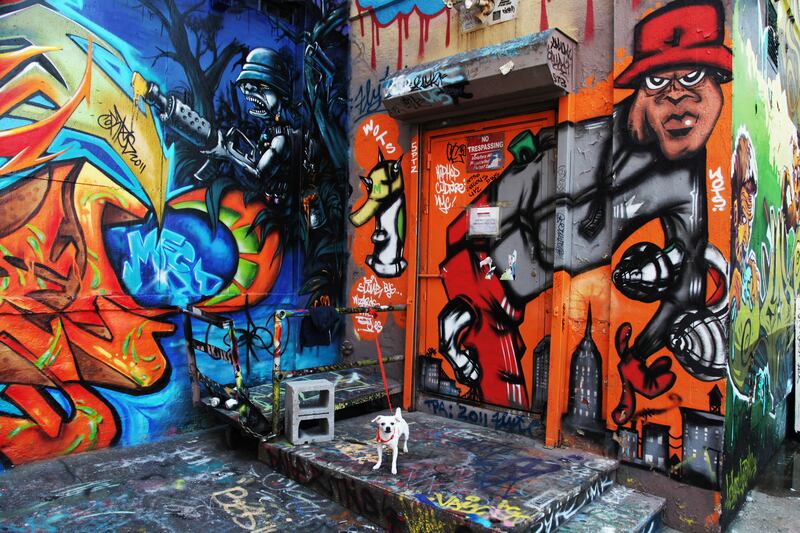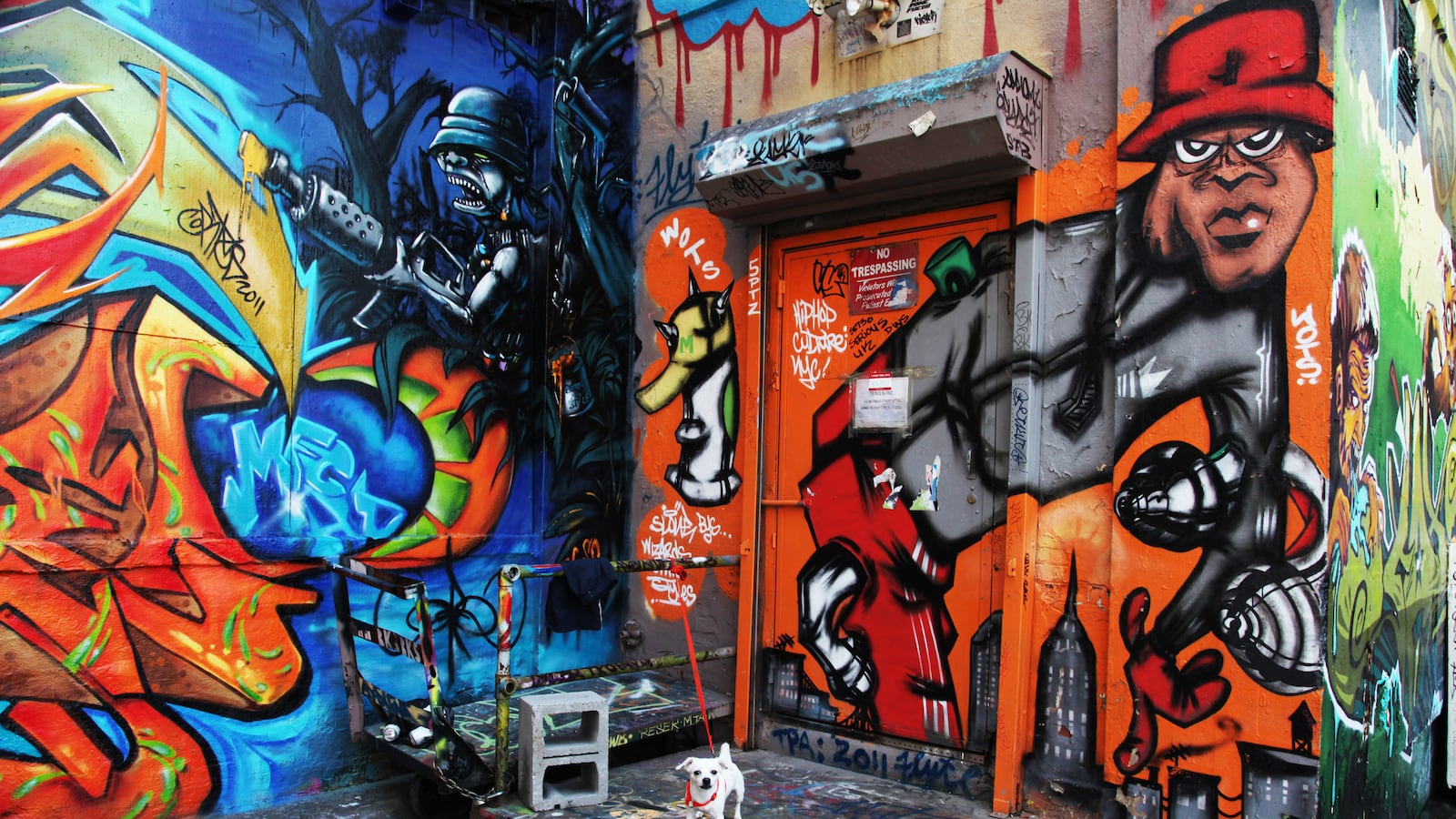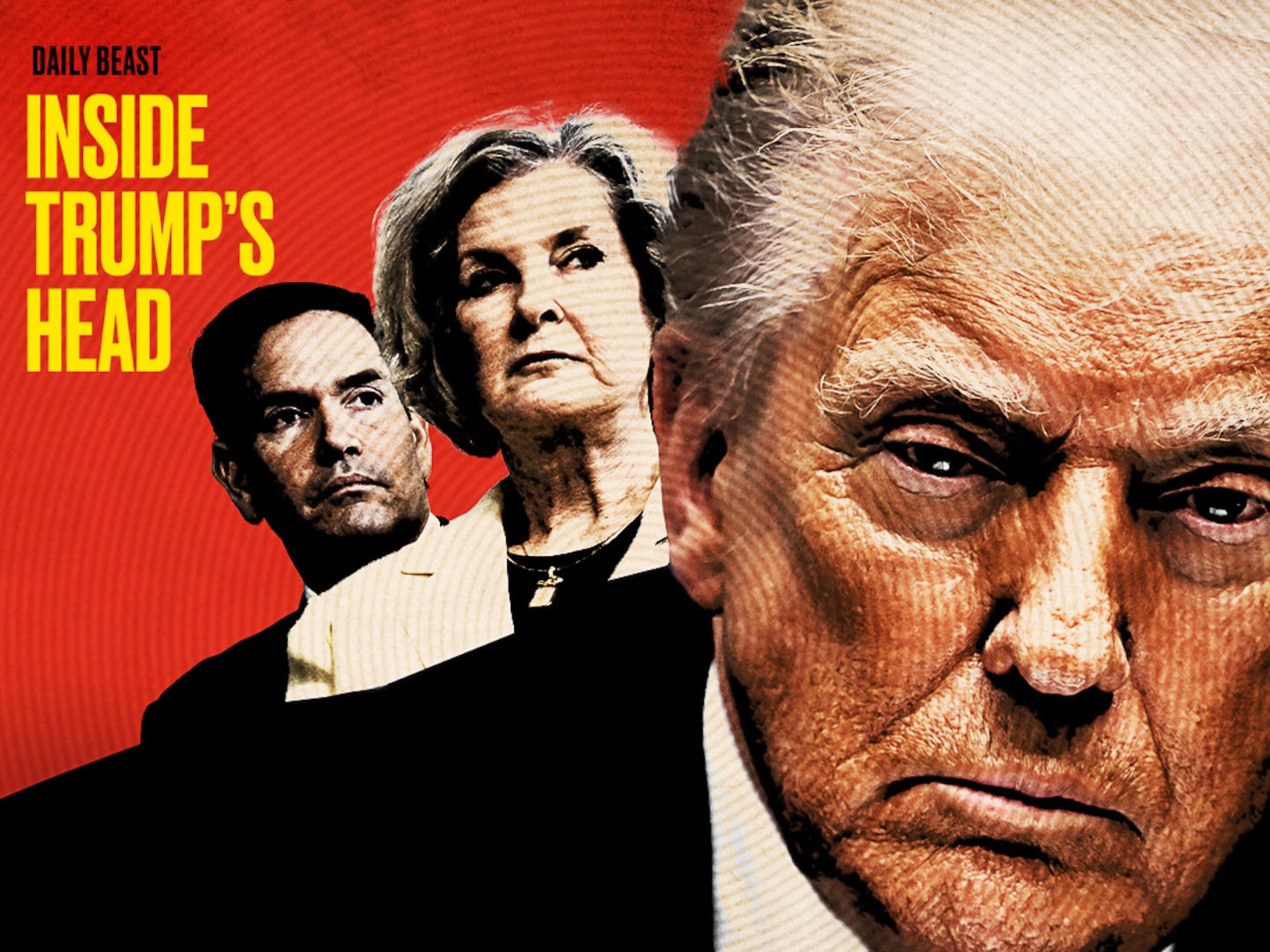For Eddie Rodriguez, better known as Snake 1, the best part of 5 Pointz—the soon-to-be high rise apartment complex in Long Island City, Queens that was once known as a graffiti mecca—was seeing his name and the names of his fellow former graffiti kings thrown up in bright colors from the above-ground 7 train. As a 13-year-old running around Washington Heights with his wide-tipped markers in 1970, the only thing Snake ever wanted was for his name to be seen. The worst part about the end of 5 Pointz, in Snake’s opinion, was that no one got to take home a piece of their work. At around midnight, Tuesday morning, the world-renowned, aerosol-covered warehouses were painted white.

As protesters took to Twitter and the streets (admirers held a last minute candlelight vigil after the whitewash began, and at least six people were arrested the following night for writing farewell messages on the newly clean walls), the building’s owner, Jerry Wolkoff, explained his decision as the compassionate option. Watching the graffiti that artists had come from all over the world to paint get demolished into pieces would have been “torture,” he told The New York Times. But Snake disagrees. “Everyone could have kept little pieces of it,” he says.
A lot has changed since Snake started writing graffiti in 1970 during the heyday of tagging in New York City, before Mayor John Lindsay declared war on graffiti in 1972, and before vandalism became a felony punishable by hefty fines and even jail time. Back in the day, Snake says, getting roughed up by the cops was the worst that would happen if he got caught scrawling his name on a wall. “Once they took my spray can, told me to turn around, and sprayed P.D. on my jacket,” he recalls. “For police department.”
Like a masterpiece—or a mural across the side of a subway car—the art of graffiti seemed to spring up overnight in New York City. At the end of 1960, writers started small, scrawling their names—usually a nickname denoted with a street number, such as Taki 183, one of the city’s first recognized graffiti writers—with marker on their street, then across their neighborhood and into other boroughs. The pastime soon became a competition, the objective: getting one’s name in as many places as possible. Eventually writers started taking the time to develop techniques, like the “wildstyle” coined by Tracy 168.
“It was something for us to do in the street, we were always in the street, we didn’t have computers back in the day,” says Snake, who initially went by Snake 188 because he lived on 188th street, but he switched to Snake 1 when he noticed he had copycats. “It started out as fun in the beginning, and then I noticed it became competitive.”
It wasn’t fun, however, for property owners or the MTA who spent thousands cleaning their buildings and trains of the tags that scared off potential gentrifiers with their criminal connotations. But as the city cracked down on moving graffiti out of public sight, the artists started moving indoors. In 1972, then-City College philosophy student and activist Hugo Martinez organized United Graffiti Artists, helping Snake and others transition their work from concrete to canvas. Snake says he was the first graffiti artist to ever sell a painting, a point of pride that he holds dear. It wasn’t long before former street and subway scrawlers like Jean Michel Basquiat and Keith Haring—considered by some the forefathers of Banksy and Shepard Fairey—became ‘80s art scene icons.
In the mid-1990s, Wolkoff permitted a non-profit group called the Phun Phactory to paint the outside of his Long Island City warehouse. The Phun Phactory’s initial objective was to keep aspiring young graffiti artists off the street and out of trouble. In 2002, Jonathan Cohen, better known by his graffiti name “Meres,” began curating the work that was painted on the warehouse, turning it into a constantly changing, outdoor art exhibit called 5 Pointz to signify the unification of the city’s five boroughs. Graffiti artists and admirers came from all over the world to paint and marvel at the giant aerosol opuses. But earlier this year, despite protests and even an attempt by Cohen and others to sue for an injunction, the Wolkoff’s development company, G&M Realty, moved ahead with plans to tear down the beloved building to make way for luxury high rises.
Roger Gastman co-authored the 2011 book, The History of American Graffiti, and was a consulting producer on the Banksy documentary, Exit Through the Gift Shop. While he acknowledges the importance of 5 Pointz as a “great, safe outlet for so many artists,” and a particularly special venue for the old timers like Snake to get together and paint, he notes that what took place at 5 Pointz was separate from actual graffiti culture. He argues that its demise, while sad, won’t have much of an effect on the scene.
“Graffiti is a visual crime,” says Gastman. “Graffiti, at its purest form, is illegal, going out, writing names on rooftops, trains, etc. for the sake of fame.”
“Graffiti can make areas look more ‘urban’ and ‘rough,’ places people don’t want to see. An easy way to pick up property value is to clean up graffiti,” says Gastman. “As cities continue to combat certain areas it makes graffiti writers get more creative, climb higher, spread out to new neighborhoods, figure out new ways to do it.”
Craig Mathis, the manager of Powerhouse Arena, a gallery that has hosted several graffiti exhibitions, sees a lot of artists struggle with the idea of embracing gallery culture. “They think they’re selling out as opposed to just amplifying their work,” he says.
New York’s clean train movement “forced those guys to decide what they were going to do with their lives, if they were going to pursue school, become adults, or find another canvas.”
“There’s been a lot of attempts to co-opt the culture for marketing, advertising, clothing,” notes Maths, pointing to people like Marc Ecko and KAWS, who redesigned the MTV moon man for this year’s VMAs, as examples of graffiti artists who’ve made that transition.
“People like getting fame, financial rewards. It’s like how hardcore punk was and what it’s become,” Mathis says. “Bands that would never play a corporate sponsored showcase now have no problem doing South by Southwest.”
“Graffiti is a tough lifestyle, it’s about getting by. People might know someone’s work, but they’re not making money off of it,” Mathis says, recalling one 70s graffiti icon who he ran into on St. Marks Place selling copies of his book and drinking beer at 8 a.m., homeless. “A lot of these guys see the futility of continuing to go out there and do their thing, possibly getting jail time, get a felony. What do you do after that?”
Other options, like fashion, graphic design, or tattooing, are ways that they can “pursue their art that don’t involve getting chased through a subway tunnel in the middle of the night.”
Mathis respects the fact that 5 Pointz existed in the first place, but his biggest lament is the fact that the old graffiti writers who were once memorialized on the warehouse’s walls are once again anonymous.
“Everything in New York changes, I’m not surprised,” he says. “It’s one of those things, something is a part of life here and all of a sudden it’s gone.”
Snake is hopeful that a new safe haven for graffiti will emerge in the wake of 5 Pointz, as more than anything he considers such places important for keeping young kids who want to paint out of trouble. Still, despite all the changes his city and his art have seen since Snake was 13, the graffiti game, at its core, is still the same: the objective is to spread your name. “It’s like a disease,” he says.”






